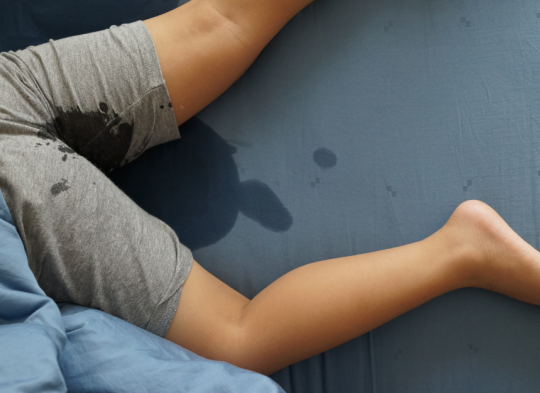Bedwetting in children is a common concern that can cause worry for both parents and the child. While in many cases it is a normal developmental stage, in some situations it requires extra attention and support.
One of the most frequently recommended strategies is controlling fluid intake in the evening hours. This doesn't mean completely restricting liquids, but rather shifting consumption to earlier in the day. The goal is to reduce the volume of urine produced at night, which can help your child stay dry throughout the night.
Practical steps include:
- Avoiding large amounts of drinks after around 6:00 PM (adjusted to your child's daily routine)
- Limiting fluids immediately before bedtime
- Refraining from caffeinated or diuretic drinks, such as tea, cocoa, or soda
It's important that your child drinks enough during the day—dehydration can lead to concentrated urine, bladder irritation, and worsening of the problem.
Avoid strict bans or creating anxiety around drinking. Developing consistent habits—such as having the last drink at a set time, encouraging your child to urinate right before bed, and creating a calm bedtime routine—can be very helpful.
For many children, especially those with mild bedwetting, just changing evening fluid habits can bring noticeable improvement. In cases of chronic bedwetting, fluid restriction should be part of a broader, professionally guided plan, ideally discussed with a pediatrician or specialist.
Regular bladder emptying is another key element. Many children do not feel the need to urinate before sleep or do it too hurriedly, which increases the risk of nighttime leakage. Establishing a routine of visiting the toilet just before bed— even if your child says they don't need to—supports the development of bladder control mechanisms.
In some cases, especially if bedwetting happens daily, gentle waking your child 2-3 hours after falling asleep to use the bathroom can help. However, this should be done thoughtfully; repeatedly waking a sleeping child without a clear plan can cause frustration and disturb both the child's and your own sleep quality.
Remember, consistency is crucial. If regular voiding and fluid habits do not improve the situation or if the problem worsens, consult a pediatrician or a pediatric urologist to rule out other causes, such as an overactive bladder or incomplete bladder emptying.
Help and Support from Parents
A child struggling with bedwetting needs not only practical help but, above all, emotional support. The way a parent responds to the problem has a direct impact on the child’s well-being, motivation to cooperate, and the effectiveness of any therapeutic actions.
Why does a parent’s reaction matter so much?
For a child, bedwetting is usually a source of shame, frustration, and guilt. The child (especially an older one) knows that “something went wrong” but does not have full control over the situation. If they face criticism, shaming, or punishment, the problem tends to worsen — tension builds up, fear of failure appears, and the child may even start avoiding sleep.
On the other hand, a warm, supportive attitude gives the child a sense of security, reduces stress, and strengthens the bond with the parent. This forms the foundation on which effective actions can be built.
What to avoid:
-
Critical remarks such as “You wet the bed again?”
-
Comparing the child to siblings or peers
-
Shaming the child in front of others
-
Punishing by taking away bedtime stories, privileges, or making them “clean up as punishment”
-
Showing impatience, irritation, or using sarcasm
How to show support:
-
Speak neutrally and calmly: “It happens. We’ll handle it together.”
-
Reassure the child: “Many kids have this. It will pass.”
-
Praise progress: “You got up on your own today — great job!” even for small steps
-
Treat the child as a partner: “What can we do to make it easier for you?”
-
Make sure the child knows they are not “to blame” and have nothing to be ashamed of
It’s also important to remember that bedwetting is not a sign of emotional immaturity or poor parenting. In many cases, it’s a temporary stage that can be gently managed. The parent’s role is not only to support the child in their daily routine but also to be a trusted adult who doesn’t judge — someone who helps the child understand and overcome the difficulty.
Motivation: Stickers, Logs, Success Notes
A child’s motivation to cooperate in managing bedwetting should be based on positive reinforcement, not pressure or material rewards. One of the simplest and most effective tools are visual systems that allow the child to observe their progress — without judgment, comparison, or stress.
How do motivational systems work?
The child can see the tangible results of their efforts, which strengthens their sense of agency and gives satisfaction from even small achievements. Even if not every night is “dry,” noticing a few successes in a row builds hope and engagement.
How to keep a calendar or logbook:
-
Prepare a simple calendar or table (printed or on a magnetic board).
-
Agree on a clear code with your child — e.g., a star for a dry night, a minus for a wet one, a plus for effort despite failure.
-
Mark the symbol together each morning — without criticism or judgment.
-
Don’t comment on failures. Instead, acknowledge effort: “It didn’t work out today, but I can see you’re trying, and that’s what counts.”
-
After a set number of “sunny days,” you can offer a symbolic reward — shared playtime or extra time with a parent rather than a gift.
Stickers, Points, Markers
For younger children, colorful stickers placed on a calendar work perfectly. For older ones, you can use a points or levels system (e.g., “3 dry nights = level 1”). What matters most is that the system is clear, age-appropriate, and offers the child a fair chance of success — even partial.
Motivational systems are most effective when part of a consistent, supportive approach and combined with daily routines (emptying the bladder, limiting fluids, calm bedtime). Even small changes in a parent’s reaction can bring great relief and help the child feel more in control.
Preparing the Bed — Protective Mattress Pads, Easy Bedding Changes
A practical part of managing bedwetting is preparing the bed and sleep environment so that both child and parent can feel calmer. Simple organizational solutions can reduce stress and ease the emotional tension that often accompanies nighttime accidents. Here’s what’s worth doing:
Protective Mattress Cover
-
A waterproof, breathable pad or mattress protector prevents soaking.
-
Choose materials that don’t rustle or cause discomfort during movement at night.
Double Bedding Layers
-
Use two layers of bedding (sheet + protector + sheet). This way, if the bed gets wet, you can quickly remove the top layer and go back to sleep without major disruption.
Spare Sheets and Pyjamas Within Reach
-
Keep a change of clothes and clean bedding near the bed or in an easily accessible spot.
-
This allows for quick action at night without stress or waking up the whole family.
A child who experiences bedwetting often feels shame and discomfort regardless of adult reactions. The less fuss made about an “incident” — the quicker the change of bedding and return to bed — the lower the risk of frustration, embarrassment, and tension. Preparing the bed is a simple but powerful gesture that shows the child that the situation is manageable and nothing to panic about.
Such practical solutions don’t cure the cause but create calmer conditions for sleep and cooperation. When a child sees that a parent handles it calmly, they, too, begin to accept it as a temporary phase that can be overcome.
Using Bedwetting Alarms
Bedwetting alarms (also called enuresis alarms) are among the best-researched and most effective tools for treating nocturnal enuresis in children over 6 years of age. They work through conditioned reflex training — teaching the child to respond to the first signals of a full bladder, gradually developing control over urination during sleep.
The alarm is a small device with a moisture sensor placed in underwear or on the mattress pad. When the first drops of urine appear, the sensor immediately triggers a sound or vibration to wake the child and interrupt urination. Over time, the body learns to respond earlier — before wetting occurs.
Studies show that regular use of alarms for at least 6–8 weeks brings positive results for most children who:
-
Do not have serious urological or neurological conditions
-
Are old enough to understand how the device works
-
Have parental support and can use it consistently
It’s recommended to start alarm therapy after consulting a paediatrician or specialist, especially if the child has had secondary enuresis episodes, emotional issues, or other health problems.
How to Manage Bedwetting — Summary
Bedwetting is a common but often unspoken issue that can significantly affect a child’s well-being and family comfort. Although in most cases it is a developmental phase, it shouldn’t be ignored or left without support. Key factors include consistency, patience, understanding the causes, and — if necessary — consulting a specialist.
Early implementation of appropriate methods, such as motivational systems, fluid restriction, bed preparation, or bedwetting alarms, not only reduces the number of incidents but also helps the child develop a sense of safety and control.
Looking for Help or a Polish Doctor in London?
At our Polish medical clinic in London, we offer:
-
Paediatric and urological consultations in Polish
-
Individual assessment of your child’s health situation
-
Support in choosing effective management methods
-
Education and practical guidance for parents
Don’t wait until the problem worsens — get professional help from a Polish paediatrician in London.



